The Doors: Live at the Bowl '68 Blu-ray Movie
HomeThe Doors: Live at the Bowl '68 Blu-ray Movie 
Eagle Rock Entertainment | 1968 | 71 min | Not rated | Oct 23, 2012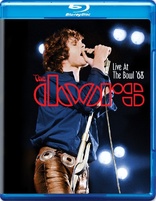
Movie rating
7.9 | / 10 |
Blu-ray rating
| Users | 4.0 | |
| Reviewer | 4.0 | |
| Overall | 4.0 |
Overview
The Doors: Live at the Bowl '68 (1968)
In 1968, four friends took to the stage of the most iconic venue in the world for a concert that would live on for decades as their best performance ever captured on film. After more than forty years, The Doors: Live at the Bowl'68 is back with a vengeance.
Starring: Jim Morrison, Robby Krieger, John Densmore, Ray Manzarek, The DoorsDirector: Ray Manzarek
| Music | Uncertain |
| Documentary | Uncertain |
Specifications
Video
Video codec: MPEG-4 AVC
Video resolution: 1080p
Aspect ratio: 1.78:1
Original aspect ratio: 1.85:1
Audio
English: DTS-HD Master Audio 5.1 (96khz, 24-bit)
English: LPCM 2.0 (96khz, 24-bit)
Subtitles
English, French, Spanish
Discs
50GB Blu-ray Disc
Single disc (1 BD)
Playback
Region A (B, C untested)
Review
Rating summary
| Movie | 4.0 | |
| Video | 3.5 | |
| Audio | 4.5 | |
| Extras | 3.0 | |
| Overall | 4.0 |
The Doors: Live at the Bowl '68 Blu-ray Movie Review
Reviewed by Jeffrey Kauffman October 19, 20121968 proved to be one of the most tempestuous years in American history. The “youth movement” was in full swing, replete with sit-ins and other protests, with dissent against the Vietnam War leading to President Lyndon Johnson famously announcing he would not accept his party’s nomination for another term. That was followed in quick succession by the shocking assassinations of Dr. Martin Luther King, Jr. and then Robert F. Kennedy, and the summer saw huge riots in Chicago during the Democratic National Convention. In fact many political historians attribute Richard Nixon’s narrow victory (only a bit larger than his nail biting loss to John F. Kennedy in 1960) to the facts that Nixon promised to end the Vietnam conflict (something he was either unable or unwilling to do for several years) and to be a “law and order” President, which was code for tamping down the simmering unrest that was roiling the nation. Through all of this turmoil the airwaves were vibrant with some of the most interesting and stylistically diverse music of the decade. Looking at the pop charts for that year is like viewing the entire prism of a slightly schizophrenic society in miniature. On the one hand, fairly traditional “easy listening” hits were still big business. Herb Alpert stormed the charts with his plaintive attempt at vocalizing on Bacharach and David’s “This Guy’s in Love With You,” and his A&M label mate Sergio Mendes had three huge hits that year with “The Look of Love”, “The Fool on the Hill” and, late in the year, a psychedelic reworking of Simon and Garfunkel’s “Scarborough Fair”. That last hit points up the tendency toward spacey influences that had started being much more prevalent even in supposed “middle of the road” singles, an obvious nod to the burgeoning drug culture that had really exploded in the Summer of Love the previous year. But sitting side by side with these more “adult contemporary” artists were an astonishing array of other styles. The Beatles hit it big that year with “Hey Jude” and “Lady Madonna”. The Stones were charting with “Jumpin’ Jack Flash”. Blood, Sweat and Tears released their first album (in their Al Kooper formulation), and folksy artists like Simon and Garfunkel and Joni Mitchell scored significant hits. There was even a nascent country-pop movement afoot with such smashes as Glen Campbell’s beautiful version of Jimmy Webb’s “Wichita Lineman” and O.C. Smith’s “Little Green Apples”. Harder rock fans flocked to such tunes as Iron Butterfly’s “In-a-Gadda-da-Vida” and Steppenwolf’s “Born to be Wild”, while at least a couple of tunes like Mason Williams’ “Classical Gas” and Richard Harris’ reading of Jimmy Webb’s quasi-suite “MacArthur Park” seemed to defy any easy attempt at categorization. The Doors also were making chart news in 1968, after having experienced their first Number One single in 1967 with “Light My Fire”. They repeated their trip to the top of the charts in 1968 with “Hello, I Love You,” and just a few days after their July 5, 1968 appearance at The Hollywood Bowl, released their first album to reach Number One, Waiting for the Sun.
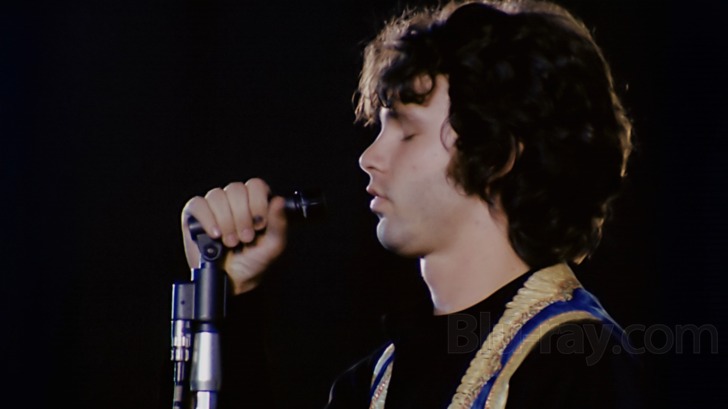
In this huge swirling panoply of styles which presented listeners with an amazing variety of sounds, The Doors were kind of an odd aggregation from the get go. Weirdly primitive sounding at times, with some songs that almost droned in a quasi-Eastern fashion, at other times the band was brilliantly innovative, as in the Baroque influences that colored “Light My Fire”, a song with some really unusual chord changes. The band’s lyrics set it apart from their earliest hits, and Jim Morrison himself became a kind of Poet Laureate for his generation, something that’s firmly on display in this concert, where he lapses (repeatedly) into spoken verse. (Morrison had dropped LSD right before coming on stage, according to recording engineer Bruce Botnick, who contributes some interesting liner notes to the disc’s insert booklet.)
In some of the supplements included on the disc, Botnick also goes into detail about the challenges of this remote recording, challenges which included microphones cutting out at inopportune times, resulting in several songs never having been released prior to this new 2012 restoration. Some purists may decry the fact that Botnick was forced to go to other live performances to capture little snippets here and there of Morrison (and Manzarek), cutting and pasting them into the Hollywood Bowl concert to “recreate” what the audience heard that night, but it must be admitted that for the most part this “subterfuge” is handled fairly seamlessly and if you didn’t know about it you’d probably be hard pressed to identify exactly where Botnick has worked some ProTools magic.
This concert was also a significant departure for The Doors in that they actually pre-planned everything and did something they were often loathe to do: rehearse. Botnick talks about other meandering concerts which would often be hobbled by long pauses while the band argued about what song to play next, which was typically followed by equally long attempts to tune their instruments. The Hollywood Bowl concert by comparison is a fairly fleet and well organized affair, with Morrison and his cohorts segueing fairly effortlessly between tunes and spoken word elements. It’s rather obvious that Morrison (at least) is getting higher and higher as the night goes on. He starts the evening with long spells of singing with his eyes closed (something the continues for the bulk of the concert), but by the end of the evening he seems to be pretty much out of his body entirely.
The other interesting thing about this concert is how it reveals The Doors as a rather surprising “jam band”, at least for its day. There are several long extended solo moments, and if they’re not thrilling virtuosic displays like younger listeners are accustomed to hearing with more contemporary outfits, they show the group exploring and discovering a lot of nice colors in their songs. There are also a couple of outright weird “Celebration of the Lizard” moments where Morrison, kind of spaced out and almost robotically meditative for much of the evening, suddenly explodes into near violence, screaming into the microphone and basically telling everybody (as he literally does at one point) “Wake up!”
This restored version of the concert reinterpolates “Hello, I Love You”, “The WASP (Texas Radio and the Big Beat)” and “Spanish Caravan”, as well as several bridging segments. The complete set list for the evening includes:
- Show Start/Intro
- When the Music’s Over
- Alabama Song (Whisky Bar)
- Back Door Man
- Five to One
- Back Door Man (Reprise)
- The WASP (Texas Radio and the Big Beat)
- Hello, I Love You
- Moonlight Drive
- Horse Latitudes
- A Little Game
- The Hill Dwellers
- Spanish Caravan
- Hey, What Would You Guys Like to Hear?
- Wake Up!
- Light My Fire
- Light My Fire (Segue)
- The Unknown Soldier
- The End (Segue)
- The End
The Doors: Live at the Bowl '68 Blu-ray Movie, Video Quality 
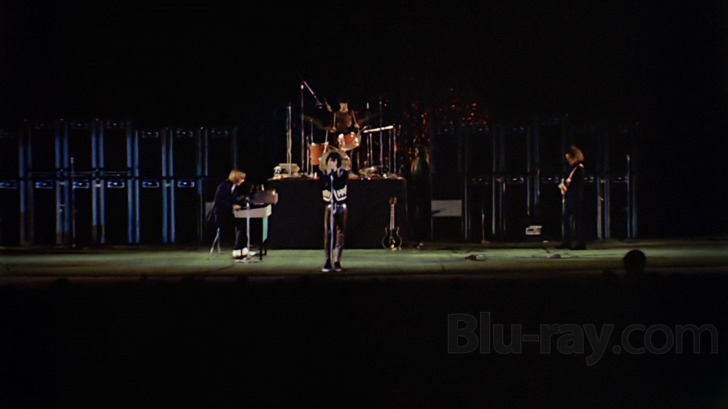
How do you feel about DNR? That is probably going to color (at least partially) how you view this new restored version of the concert culled from the original negative. Eagle Rock delivers the concert via an AVC encoded 1080p transfer in 1.78:1. This new cut has footage we've never seen before, and there are issues with camera placement, focus and various people (audience and band) blocking shots at times. But compared to previous home video releases, this is a quantum leap forward in terms of color, black levels and general clarity. The presentation still shows signs of softness in the wide shots especially, where the band is little more than colorful blobs on the stage. There does appear to have been some digital scrubbing applied to this release though, and those who don't like DNR are no doubt going to obsess about that element. However, despite the scrubbed appearance, it must be noted that there is still fine object detail firmly on display, especially in the many close-ups, where everything from Morrison's bruised fingernail to sweat pouring off of Robby Krieger's face are clearly apparent.
The Doors: Live at the Bowl '68 Blu-ray Movie, Audio Quality 
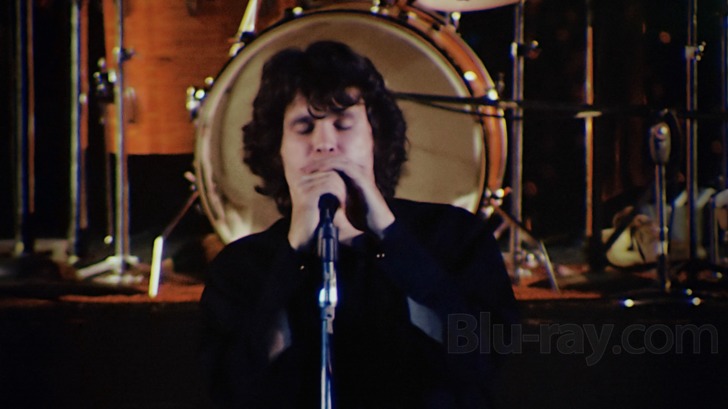
In an analog to the question starting off the assessment of the video quality of this release, how do you feel about ProTools? Bruce Botnick, who recorded this concert the night of the performance, has digitally inserted snippets from other concerts in order to recreate several moments that had previously been lost to microphone issues. If you're not overly bothered by that gambit, both lossless audio options on this release, a DTS-HD Master Audio 5.1 surround mix and an LPCM 2.0 stereo fold down, offer sterling fidelity and brilliant clarity, at least for the most part. Morrison's sudden shouting and weird volume changes mean there is some occasional, albeit fairly minor, distortion that no amount of digital tweaking could overcome. The surround mix also makes the audience's lighting of fireworks during "Light My Fire" a bit problematical as well, with several loud pops interrupting the flow of the music.
The Doors: Live at the Bowl '68 Blu-ray Movie, Special Features and Extras 
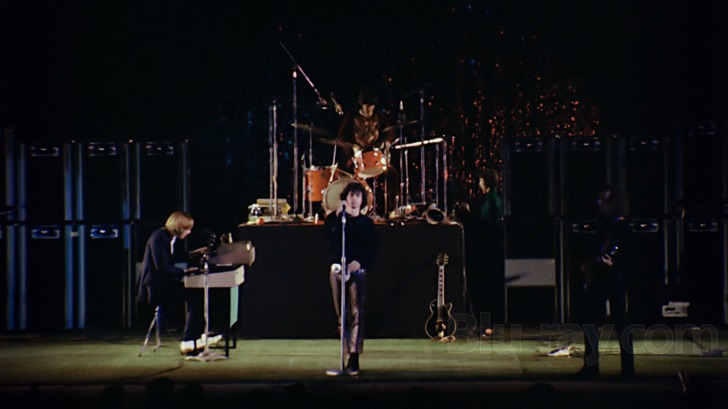
- Echoes from the Bowl (HD; 20:18) is a fascinating background piece on the performance venue.
- You Had to Be There (HD; 19:08) features interviews with Ray Manzarek, John Densmore, Robby Krieger, The Chambers Brothers (one of two opening acts), and others, all talking about what it was like that night at the Hollywood Bowl.
- Reworking The Doors (HD; 13:51) is an interesting look at the efforts to restore the concert to as complete a form as possible for this release. The work on "Hello I Love You" is nothing short of astounding.
- Wild Child (From The Smothers Brothers Show) (SD; 2:52)
- Light My Fire (From The Jonathan Winters Show) (SD; 3:08)
- Gloria (Music Video) (SD; 3:31)
The Doors: Live at the Bowl '68 Blu-ray Movie, Overall Score and Recommendation 
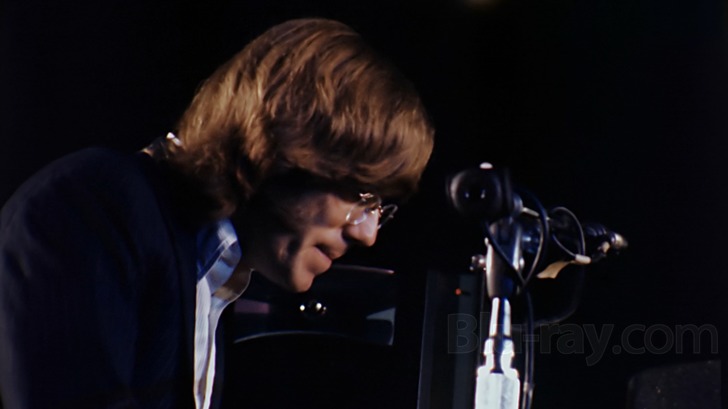
This is one of the most legendary live concerts by one of the great bands of its era, and fans will probably be willing to overlook the digital tweaking that accompanies both the video and audio elements here. It's fantastic to see this new cut, especially insofar as we finally get a more complete feel for what The Doors' performance that night really must have been like. This Blu-ray also has some really appealing supplementary content, and comes Highly recommended.
Similar titles
Similar titles you might also like

The Doors: Feast of Friends
1968

The Song Remains the Same
Led Zeppelin
1976

Queen Rock Montreal & Live Aid
1981

When You're Strange: A Film About The Doors
2009

Nirvana: Live at the Paramount
1991

Ladies and Gentlemen: The Rolling Stones
1973

The Doors: R-Evolution
2013

Concert for George
2003

Woodstock: 3 Days of Peace & Music
Director's Cut | 40th Anniversary Edition
1970

Shine a Light
The Rolling Stones
2008

The Who: Live at the Isle of Wight Festival 1970
1970

U2: Rattle and Hum
1988

Rush: Beyond the Lighted Stage
2010

Pink Floyd: At Pompeii MCMLXXII
1972

George Harrison: Living in the Material World
2011

Stop Making Sense
1984

The Eagles: Farewell I Live From Melbourne
2005

Blue Wild Angel: Jimi Hendrix Live at the Isle of Wight
1991

Rush: Time Stand Still
2016

Rush in Rio
2003